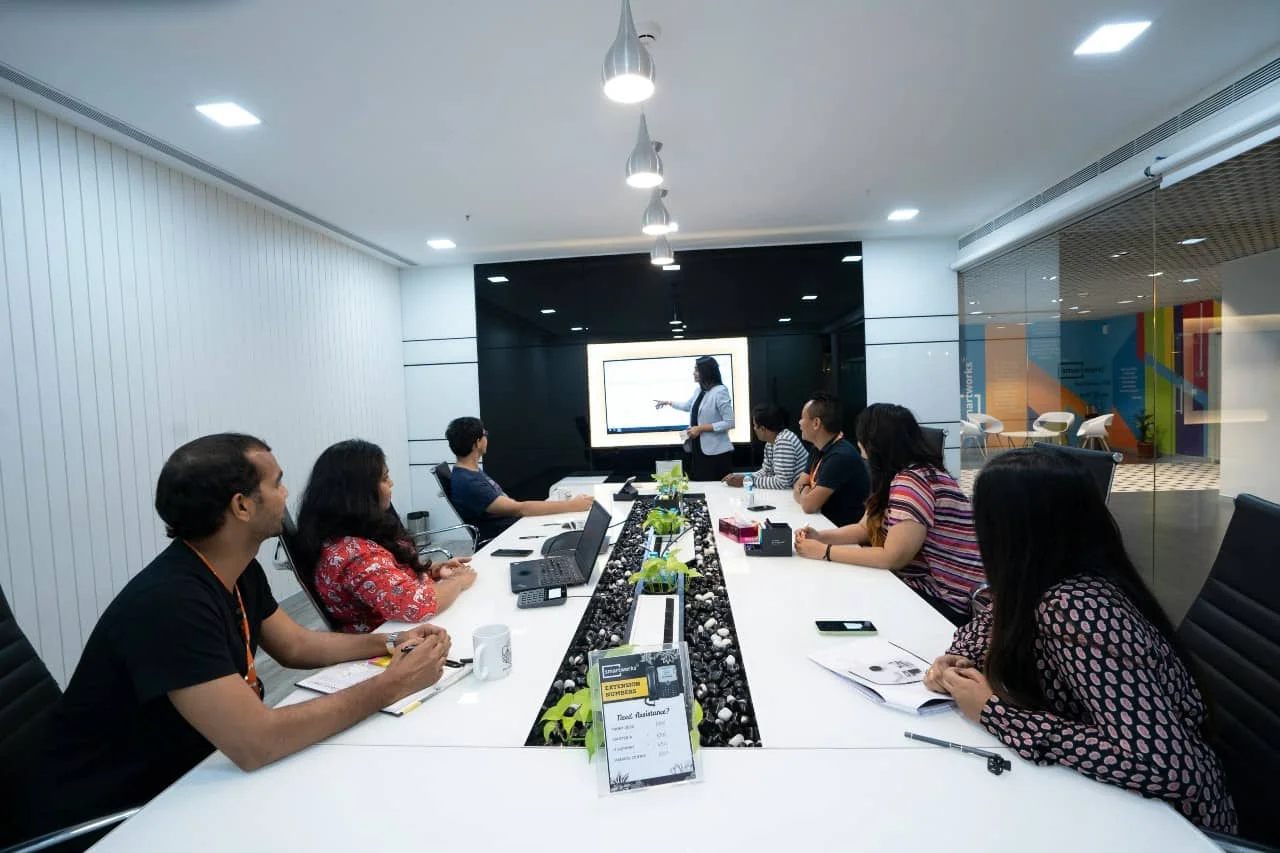Great Strategies Require Great Thinking: The Seven Steps To Effective Strategic Thinking
Strategic thinking is the process of identifying the best way to achieve your
vision or objective given your unique situation, circumstances and
preferences. It requires a systemic view of your own organization and
industry, at the market level and across the larger economic and business
environments. This type of thinking includes the ability and willingness to
look at problems differently, try new things, take risks and consider long-
term implications of current actions.
The difference between planning and strategic thinking according to Henry
Mintzberg, “Planning has always been about analysis – about breaking down a
goal or set of intentions into steps, formalizing those steps so that they can
be implemented almost automatically, and articulating the anticipated
consequences or results of each step. Strategic thinking, in contrast, is
about synthesis. It involves intuition and creativity. The outcome of
strategic thinking is an integrated perspective of the enterprise, a not-too
precisely articulated vision of direction.”
Strategic thinking requires re-framing problems to recognize opportunities
that initially might not look apparent and to avoid falling into potential
traps such as management fads and group think. Finally, it requires proactive
monitoring and quick responses to make adjustments as change effects progress
or when it becomes apparent that the strategy or its implementation is not
working.
Change Is a Constant
Leadership is essentially about change, and change is a trajectory to the
future; it implies something new. If leaders are going to introduce something
new, it should be based upon sound goals and a well-thought-through strategy.
Effective strategic thinking helps identify a path that leverages strengths,
minimizes threats and weaknesses, and maximizes competitive advantage.
It demands a “What happens if I do this?” mindset. The answer to this question
should focus first on the impact to the larger system as opposed to the
individual parts. Strategic thinking requires scanning the future for
potential changes, opportunities and risks. This mindset also includes
anticipating long-term implications of current activities and considering the
interdependencies and relationships within the system and at its boundaries.
It recognizes the ongoing, essential nature of this work.
Strategic thinking requires a long, holistic view with planning for likely
scenarios, and leaders typically approach it in a couple of ways. Some leaders
take a long-term systems approach, considering possibilities and creating
plans from that knowledge. Their process is collaborative and fluid, engaging
others and remaining flexible. The strength of this approach is the ability
and willingness to involve other perspectives and to consider a wider view
that looks beyond traditional boundaries for opportunities and threats. Risks
associated with this approach include being so engaging and open to
possibilities that progress is hindered. As a result, people can lose
confidence in the leader’s ability to make a decision or support his or her
own strategy, which changes repeatedly based on others’ input.
A 2013 by Management Research Group (MRG) in which the leadership practices
and effectiveness of 60,000 managers and executives in 140+ countries and 26
industries were evaluated. Participants were assessed using a 360-degree
assessment tool measuring more than 20 measures of effectiveness. Leadership
included such practices as innovation, persuasion, communication, and results
orientation, while measures of effectiveness included such characteristics as
future potential, credibility, business aptitude, and people skills. The study
found that a strategic approach to leadership was, on average, 10 times more
important to the perception of effectiveness than other behaviors studied.
Another approach is more linear and structured: thinking five steps out,
planning accordingly and creating contingency plans. Leaders who lean toward
this approach also acknowledge the whole system and the long term, and they do
plan for contingencies; however, the process and the output are somewhat more
methodical or disciplined. Strengths associated with this approach are
consistent progress and clear direction. Risks are a potentially narrow
perspective and a tendency to look only for evidence that supports the
leader’s plan rather than taking a truly holistic view and including other
points of view.
Confirm the Objective and the Environment
Expanding your view to think strategically requires not only having a clear
objective but understanding everything that influences it. This requires
gathering information and organizing it so that your understanding is thorough
enough to support future decisions and actions. There are a number of important
questions to consider. What is the objective, and why was it chosen? How will you
know when you’ve reached it? What is going on inside and outside the
organization and the industry that could impact it?
Who are the people affected by it, or who could have an effect on it? The
objective drives all action, so while many factors will eventually help you
decide which strategy to implement, anything that does not support the
objective should not be on the list.
Anticipate Opportunities and Obstacles
Think of a chess game. The objective: checkmate the opponent’s king. One thing
chess players do is to start with the end game in mind—the actual way in
which they want to capture the king. They have imagined it (or seen it) before
and studied the various ways in which that particular capture can occur. They
know the environment, and by working backward from the objective, they can
anticipate what the opponent will do in response to certain moves. You can do
the same. Once you know your objective and understand the environment well
enough, work out the steps you need to achieve the success you imagine,
identify the people/players who should be involved, anticipate the changes
that might impact your moves, and consider how the decisions you make today
will impact your ability to achieve the result you want later.
By delineating the steps, you identify what needs to be done before the
objective can be achieved. This method helps identify roadblocks, if any, and
helps you prepare to deal with them either to eliminate them or minimize their
impact. Thinking backward allows you to determine where politics,
relationships and other stakeholders play a role and where you need to make
calculated decisions about the outcomes you want and the messages you want to
send. This way of carrying out work is strategic.
Schedule Time for Strategic Thinking
There is never enough time for strategic thinking … or is there? Instead of
hoping to find time, schedule it like you do other appointments. After all, it
is an appointment, a meeting with yourself or with others focused on strategy
and nothing else. Establish the habit of scheduling one hour every week to
review current objectives and the strategy, consider the future, scan the past
and present, and connect the two. As Jeff Weiner, CEO of LinkedIn says, “If
you don’t take the time to think proactively, you will increasingly find
yourself reacting to your environment rather than influencing it. The
resulting situation will inevitably require far more time (and meetings) than
thinking strategically would have to begin with.” Strategic thinking is the
responsibility of leadership, and it expressly does not include tactical
planning. That is a separate activity and must remain so to keep the brain
engaged in strategy.
A crucial point is that strategic thinking is not an optional activity for
leaders. It is an essential and never-ending process. Many leaders who have
excelled through operational excellence do not recognize strategic thinking—
absent of some other physical activity—as a priority.
As a result, they react to daily fires that steal their time and energy rather
than minimizing them and influencing the future through preparation and
anticipation. They consistently struggle to keep up with little hope of
getting ahead. Reaction is not leadership, so these well-intentioned
operational specialists are eventually replaced, often after painful burnout,
by leaders who are able and willing to spend time looking ahead, studying and
anticipating.
Researchers have found that a lack of strategic thinking by senior managers
has been identified as a major shortcoming in organizations. Organizations
that successfully integrate strategic thinking at the individual and
organization level are able to create a critical core competency that forms
the basis of an enduring competitive advantage.
Consider the Impact
When we make a decision about our work, we sometimes fail to consider how it
might impact others. This is often a huge mistake, especially as a strategy is
identified and implemented. Think about who or what the decisions you are
considering impact: processes, stakeholders, projects, resources. Consider how
it impacts each. Does it change a process? If so, how and where? Does the
change affect other units, and, if so, do you know how? Does it change
resource availability, product outcomes, markets or skills required? Do those
things affect other people or other units? How? Everything you do has the
potential to affect someone or something else, including their strategy and
performance and/ or your own long-term results. So, take the time to consider
—maybe even map out—the impact your potential decisions and actions will
have on others.
Align Processes, Goals and Strategy
To create a strategy is one matter; to execute it, quite another. Execution
requires a specific sequence of interdependent decisions and actions that flow
in a precise way to support the strategy in pursuit of the vision. In the
United States, Southwest Airlines is an excellent example. The founders set
out to create an airline that allowed everyone the opportunity to fly and
provided passengers with what they wanted most: on-time arrival, low cost and
a good experience. To achieve that vision, they decided on an economical
strategy that did not negatively affect the passenger experience. To
accomplish the strategy, they made decisions that removed cost in unique ways:
They use only one kind of aircraft; they do not serve meals; they have open
seating, and they get in and out of a gate quickly. To support the decisions,
they built processes and incentives that enable and reward effectiveness and
efficiency while taking the best care of what passengers value most.
Everything they do supports the low-cost strategy that also focuses on serving
customers in ways most important to them. Everything aligns with the vision.
Conduct a SWOT Analysis (Preferably With Your Team)
SWOT is an acronym for strengths, weaknesses, opportunities and threats. A
SWOT analysis is used to identify:
- Strengths and how to leverage them for competitive advantage
- Weaknesses and how to eliminate or mitigate them
- Opportunities and how to take advantage of them
- Threats and how to anticipate them and minimize their impact.
A SWOT analysis is a great exercise for scanning the internal and external
environments and will provide some crucial information when devising a
strategy.
This analysis is a great tool that helps in strategic planning. It is a
technique that actively looks at the strengths, weaknesses, opportunities and
threats of projects, ideas, companies, nations, even individuals. Generally
speaking, strengths and weaknesses are internally focused, and opportunities
and threats are externally focused.
A SWOT analysis starts with a clear current and future state. So, if you were
going to conduct a SWOT analysis to determine strategy at the company level,
you would start with a clear vision (future state) and a clear picture of
where the company is now relative to the vision (current state). Then you
would look internally to identify strengths and weaknesses. These might
include capacity, availability of resources, products and services currently
offered, market share, talent (what you have and your ability to draw it) and
capital. Next, you would identify opportunities and threats in the external
environment. Possibilities are new technologies, competitor advantage,
availability of resources and talent in certain areas, changing demographics,
politics and economies. Finally, you would analyze the results by looking at
your strengths and the potential opportunities to determine strategies for
your organization while simultaneously shoring up risks by looking at
weaknesses and threats.
Conclusion
Becoming a more strategic leader, like any development goal, requires practice
and taking the time to think through your goal, take necessary steps and
implement behaviors. This entails expanding your frame of reference, pushing
your thinking to see the bigger picture and the interrelationships between
various elements. In many respects, effective strategic thinkers act like
detectives exploring the clues, identifying interconnections and analyzing
information with the intent of achieving a bigger goal.
Reference:
1 - Mintzberg, Henry; The Fall and Rise of Strategic Planning. Harvard Business
Review January-February 1994
2 - https://hbr.org/2014/02/develop-strategic-thinkers-throughout-your-organization
3 - Ingrid Bonn, (2001) “Developing strategic thinking as a core competency”,
Management Decision, Vol. 39 Issue: 1, pp.63-71,
https://doi.org/10.1108/EUM0000000005408
4 - Schoemaker, Paul J.H., (1995) “Scenario planning: a tool for strategic
thinking” from Sloan Management Review 36 (2) pp.25-40, Cambridge, Mass.:
Massachusetts Institute of Technology (C)





